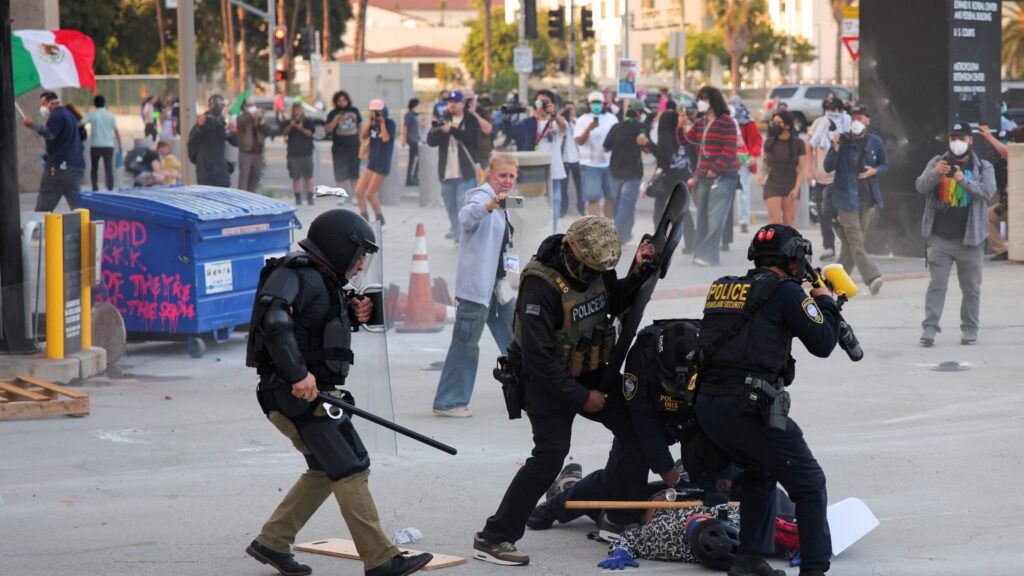In response to President Donald Trump’s intensified efforts to deport immigrants, communities across the United States are pushing back against the administration’s aggressive tactics. The Department of Homeland Security has defended its workplace raids and arrests as necessary, citing a significant increase in assaults on agents. However, immigrant advocates argue that the government’s actions have crossed a line, prompting widespread protests.
The situation escalated dramatically in Los Angeles on June 7 when protests against armed agents conducting raids turned violent, leading Trump to deploy National Guard troops to quell the unrest. Tensions had been building in the city, with clashes between protesters and law enforcement culminating in a significant show of force.
Similar resistance has been seen in various locations across the country. In San Diego, individuals protested against the arrest of restaurant workers suspected of lacking proper work authorization. New York City witnessed protests outside immigration court buildings following arrests of individuals attending court proceedings. In Massachusetts, high school students rallied after a junior was detained by agents, sparking fear and prompting community action.
These incidents reflect a broader trend of community mobilization against aggressive immigration enforcement tactics. As protests continue and tensions remain high, questions around the use of force and community safety persist, underscoring the deep divide between government actions and public sentiment regarding immigration policies.

